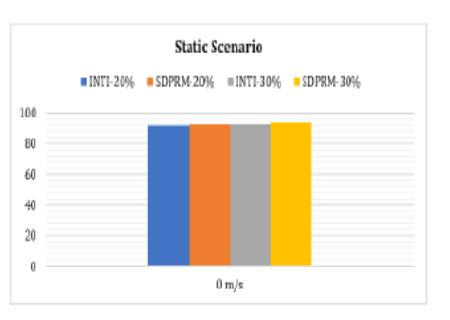


Indian Journal of Science and Technology
DOI: 10.17485/IJST/v15i37.1156
Year: 2022, Volume: 15, Issue: 37, Pages: 1892-1899
Original Article
C Linda Hepsiba1*, R Jemima Priyadarsini2
1Assistant Professor, Department of Computer Science,, Bishop Heber College, Affiliated with Bharathidasan University, Trichy17, Tamilnadu, India
2Associate Professor, Department of Computer Science, Bishop Heber College, Affiliated with Bharathidasan University, Trichy17, Tamilnadu, India
*Corresponding Author
Email: [email protected]
Received Date:31 May 2022, Accepted Date:01 September 2022, Published Date:14 October 2022
Objective: To propose an Intrusion Detection System, called SDPRM (Sinkhole Detection using Probe Route Mechanism), to distinguish sinkhole assaults on the steering administrations in IoT. Methods: SDPRM intends to moderate unfriendly impacts initiate in IDS which troubled the routine tasks. The proposed architecture has the node ranker, notoriety and trust systems for recognition of assailants by examining the way of behaving of gadgets. Probe routing mechanism along with cluster configuration of the IoT gadgets are used to detect the SH attack. The probability density function is used to detect the behaviour of the gadgets present in the IoT environment. To demonstrate the efficiency of the proposed work Cooja simulator is used for experimentation. Findings: The proposed SDPRM is compared with the existing INTI architecture and it shows good results for detection rate and packet delivery ratio parameters. The comparative analysis is performed for static and mobility scenario. Novelty: In the existing architecture, probe route protocol was not used to detect the sinkhole attack in IoT environment. The current research work uses FIB (Forwarding Information Base) based proberouting mechanism is used for securing the communication channel. The proposed architecture outperforms than the existing INTI architecture in terms of detection rate and packet delivery ratio.
Keywords: Internet of Things; Network security; Sinkhole attack; Proberoute; Beta distribution
© 2022 Linda Hepsiba & Priyadarsini. This is an open-access article distributed under the terms of the Creative Commons Attribution License, which permits unrestricted use, distribution, and reproduction in any medium, provided the original author and source are credited. Published By Indian Society for Education and Environment (iSee)
Subscribe now for latest articles and news.